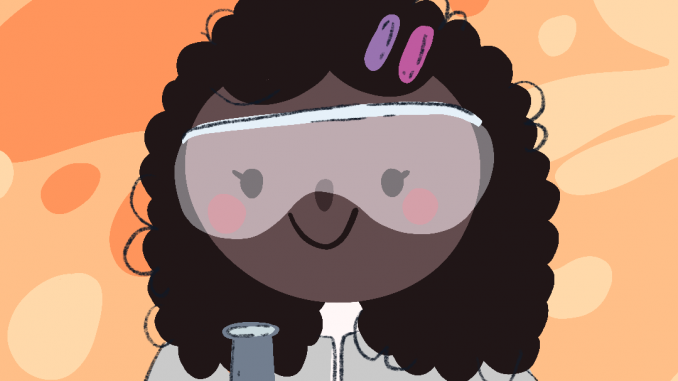
On the first day of class, Amanda Hughes’ high school biology teacher instructed the students to draw what biology looks like to them. She drew a double helix DNA strand with a person climbing up it.
“I was just like, ‘This is me at the beginning of this journey, and maybe I want to be a doctor someday,’” Hughes said.
Female mentors can increase women’s academic experiences and retention in engineering, according to a 2017 Proceedings of the National Academy of Sciences study. Female Temple University students and faculty recall their initial interests in science and how those experiences sparked their interest in teaching.
Mariana Bonfim, who lived in Sao Luis, Brazil, until 2015, is a fifth-year biology student. Her interest in science was also sparked by her high school biology teacher.
“I feel as if in my country, it is not popular to be a biologist, as many STEM majors are often directed toward the health sciences,” Bonfim said. “But my teacher was a field biologist, which was exciting to see that people actually do that.”
Since then, Bonfirm has invested time outdoors studying both deciduous forest and marine ecosystems, she said. While she appreciates her work in the field, she discovered her true passion is for teaching others.
Bonfim has worked with elementary, middle, high school and college students, and is inspired to share her passion for science with others, she said.
Her current advisor for her Ph.D. program is very engaged in providing opportunities for other female scientists and increasing diversity in the sciences in general, Bonfim said.
“That’s really important and that definitely had an impact on me and, you know, inspiring me to do the same for other female scientists,” she added.
Similarly, Ann Valentine, a chemistry professor and associate chair of the chemistry department, was inspired by a high school teacher at an early age.
Though science had intimidated her, Valentine’s teacher gave her opportunities to participate in research projects, which made approaching science easier for her. Through those opportunities, her teacher gave her the push to pursue her career, Valentine said.
Valentine’s teacher also made sure to teach both male and female students about women in STEM and once made everyone in the class do a presentation on a female scientist, Valentine said.
“I don’t think a male teacher would have been so clear and intentional about those things,” she added.
Valentine is now a full-time academic professor who teaches General Chemistry, runs a research lab and manages academic affairs within the department. Valentine also works with graduate students, helping direct their Ph.D. research.
While Valentine is grateful for the opportunities she has had, there have been times when male colleagues have treated her differently for being a woman, she said.
“I could tell horror stories of jerk behaviors and awkward things at conferences and weird people stalking me while I’m out trying to do collaborations, where things happen and you’re like, ‘This would not happen to me if I were a male,’” Valentine added.
Bonfim has also experienced difficulties while pursuing her career.
“Being a minority, you face limitations, as English is not my native language, it is often a barrier with me and other researchers,” she said.
With the events of the past year like COVID-19, Black Lives Matter protests and the presidential election, Bonfim stressed how important it is to address the differences among others in the field as well.
African American and Hispanic individuals are underrepresented within the STEM field, as they make up only nine percent and seven percent, respectively, of science and technology jobs available in the U.S., according to a 2018 study by Pew Research Center.
“We have to acknowledge that there is a gap and gender bias,” Bonfim said. “We are starting to reduce that gap in science, but we have to continue this conversation.”
As part of the international push to get more women in STEM, the United Nations observed International Day of Women and Girls in Science through webinars and panel discussions on Feb. 11.
Temple is playing a role in addressing that gap with the chemistry department composed of 29 percent women tenured faculty, Valentine said.
“I hope we don’t let go about the urgency for diversity,” Bonfim said. “Being an ecologist, you see the benefits of diversity in the world, the stability of a system is dependent on variations and diversity, which applies to a human society as well.”
As she continues building her career, Hughes is also working to provide a good life for her future children. It’s added pressure women have that men don’t typically have, she said.
With more women involved in the field, more understanding will be provided when someone needs to take time to focus on their children, Hughes said.
“We’re in such an amazing time for women to have a voice, women to shed their trauma and be accepted and embraced and to carry on stronger and find community in almost every aspect of this society,” she added. “And there are still the dark spots, but I think everyone is becoming more aware.”
Contributed reporting by Eden MacDougall



Be the first to comment